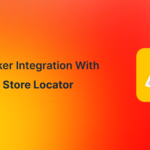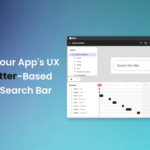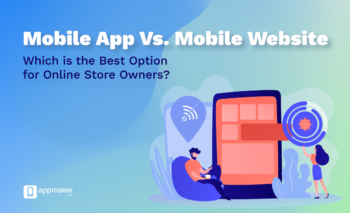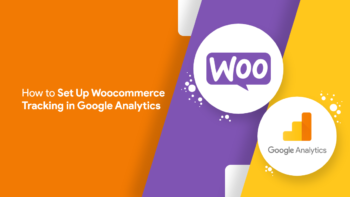Have you noticed that the shoppers, if they can’t find what they’re looking for within milliseconds, will go to another store? This lets the merchants keep them interested by allowing them to browse, purchase, and connect.
What is produce discovery in eCommerce?
The term “product discovery” is no longer new in the eCommerce world. It specifically refers to how online customers browse your website’s merchandise. There are several ways to create a complete journey of discovery, including text, visual search, customized suggestion carousels, smart merchandising, and even inspiration galleries. The objective is to provide each consumer with relevant products at the right time, which will improve the customer experience and increase retail conversions.
87.6% of consumers report that they occasionally, frequently, or always face an excessive quantity of product selections. Therefore, being unable to find desired items is the main factor in customers leaving an eCommerce site without making a purchase. Therefore, the cornerstone for addressing customers’ pain concerns should be an efficient discovery process.
Journey for Modern Product Discovery
A multitude of channels, including social media and online marketplaces, are available to consumers for shopping and product discovery. Before making a final purchase choice, they frequently go through up to 4 phases with a brand, according to ChannelSight.
The phase of Low Intent
The first stage is the low intent stage. Consumers look for inspiration before making purchases on platforms including social media, online stores, search engines, blogs, television, or influencers. The most often used source for looking up product information is social media. Additionally, many consumers choose more reliable sources. 41% of them look to bloggers or other influencers for shopping inspiration.
Consideration
Consumers now have a broader view of brands. Their total perception is influenced by the product, the experience, the service, the brand story, the values, and other elements. For instance, 73% of customers worldwide said they would alter their buying patterns to lessen their environmental impact. They are interested in buying and occasionally paying extra for things that improve the environment as they grow more aware of what they put in and on their bodies.
Individuality
Gen Z and other younger clients are very passionate about their personal style. They value brands that are conscious of and cognizant of the aesthetics they are aiming for. Therefore, to win over these customers, you must make suitable product recommendations online, in marketing emails, and in social media ads. In order to maintain their long-term brand loyalty, you should also offer discounts on things that are pertinent to them.
High expectations
Today’s consumers anticipate that their online shopping will be as simple and quick as using a mobile device. Their image of your brand could be significantly impacted by just one bad internet visit. Additionally, if consumers switch between your shop and your app and back, they anticipate that each experience will mesh to create an easy omnichannel journey. Simply put, they hold businesses like brands and shops to the same standards as digital giants.
Why Is Product Discovery Important in eCommerce?
Let’s imagine you are successfully generating a ton of traffic for your store through influencer marketing, paid to advertise, and social media. What was the point, though, if they simply click away after a short while? The best strategy to maximize your chances of converting high-intent buyers is to take them directly to what they desire.
In a similar vein, customer experience, rather than price or brand, is what generates more than two-thirds of consumer loyalty, according to Gartner. Brand loyalty in eCommerce is significantly impacted by product discovery. Online retailers cannot ignore the benefits because they are too great.
Your revenue will improve if you can satisfy your consumers’ requests for an easy path from discovery to purchase. It increases conversions, average order value (AOV), and customer lifetime value (CLTV) by delivering a positive and simple user experience. According to recent research, product discovery can raise a brand’s conversion rates by 130% and its revenue per session by 2.3%.
Customers who receive personalized product recommendations are more likely to be loyal to a brand and have a stronger brand affinity. Products that fit your client’s needs and interests encourage impulsive purchases, raising AOV. Current shoppers are 50% more likely to try new things than new customers, spending 31% more overall. In addition, 77% of customers said they would recommend a brand to a friend after a single positive experience.
Product discovery provides e-merchants with useful information. You can foresee trends, manage inventories, and ultimately make more informed and profit-driven business decisions by thoroughly analyzing what your consumers are searching for (such as the most popular search phrases).
How Brands Can Improve the Efficiency of Product Discovery on eCommerce
The implementation and improvement of product discovery is a vast topic. To put your company on the path to good product discovery, there are a few simple actions you can take.
Make your homepage interesting
Take note that you just have 15 seconds to win over customers. Showcase groupings of top-selling and hottest items, fresh arrivals, inspiration galleries, and educational or social content that subtly advertises your goods.
Create a filter-rich, easily navigable website
Make it as easy as you can for clients to search, find products, and navigate your website. Product filtering ought to be effective enough to let customers overlay choices without interfering with the shopping process. According to a recent study, the most popular ways consumers actively participate when looking for products are through search engines and product filters.
The advancement of tailored product discovery using AI and ML technologies
Make sure you select the ideal recommendation engine if you want to stay ahead of the competition. Instead of just relying on shopper demographics, it should actually allow for customized experiences depending on their activity.
Data Analytics
Data enables you to get a complete picture of the desires and intentions of your customers. It also affects the recommendations you make for enhancing conversions, CLTV, and AOV. You can combine image data with other shopping data to increase customized suggestions. Additionally, search data can enhance inventory control and other business operations.










No Comments
Leave a comment Cancel